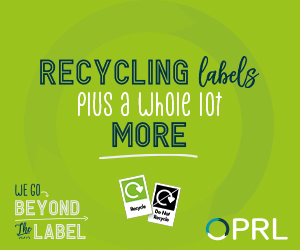
UNIVERSITY of Glasgow researchers have discovered a new way to remove Bisphenol A (BPA) from water using controlled waves of ultrasound.
Around 10 billion kilograms of BPA are produced each year, mainly for use in plastics. BPA can build up over time in the human body and disrupt the endocrine system and upset the balance of hormone production.
Although BPA’s use in common consumer goods like food packaging, reusable bottles, and thermal paper receipts has been reduced in recent years, its decades of widespread use in the plastics industry has made it a common pollutant in water supplies around the globe.
In a paper published in the journal Ultrasonics Sonochemistry, researchers from the University of Glasgow’s School of Chemistry show how they developed a dual-frequency ultrasound system to help eradicate BPA from water.
The system works by generating millions of highly-energetic microscopic bubbles in contaminated water through the application of controlled ultrasound. When these bubbles grow and collapse, they briefly create extreme conditions of high temperature and pressure, creating highly-reactive ‘hot spots’. The conditions in these hot spots are intense enough to break BPA molecules down into harmless substances like carbon dioxide, safely removing the pollutant from the water.
Combining two frequencies of ultrasound during the process enabled the researchers to produce more powerful effects than a single frequency of ultrasound could achieve. In the lab, they tested the system’s effectiveness by measuring both the direct removal of BPA molecules and the broader reduction of organic pollutants when they were exposed to frequencies combined at either 20 kHz and 37 kHz, or 20 kHz and 80 kHz.
The 20 kHz / 37 kHz achieved the best results in the 40-minute tests, degrading 94% of the BPA in samples of polluted water and creating a 67% reduction in chemical oxygen demand. Chemical oxygen demand is a metric often relied on by the water industry to assess water quality. It is used as an indirect measure of the amount of carbon-based matter in water by measuring the oxygen needed to chemically oxidise all of this matter to harmless species like carbon dioxide.
Shaun Fletcher, the paper’s first author, said, “Traditional water treatment facilities aren’t fully equipped to deal with BPA pollution. At the moment, where they do try to deal with it, the focus is on removal with activated sludge, or with absorption on activated carbon. Once removed from water, the BPA hangs around in this sludge or carbon, and still needs disposed of. We’ve focused on actively degrading the chemical itself, with no secondary treatment required.
“What we’ve been able to show for the first time is that ultrasound alone can offer an effective method of removing BPA from water. Previous work in this area has required combining ultrasound with catalysts or other chemicals, but our dual-frequency approach is much simpler. You don’t need to worry about removing your catalyst or further purifying your water by removing anything you’ve added to it in the treatment process.”
Paper co-author Dr Lukman Yusuf added, “The key to this approach is the quality of the the bubbles we’re generating using ultrasound. We’ve shown in this that we can reliably generate bubbles with the conditions required to degrade BPA, building on previous research from the group which demonstrated its effectiveness in removing methylene blue, another common water pollutant.
“Ultimately, we’d like to expand this technique to help tackle a wide range of pollutants, including ‘forever chemicals’ like PFAs. We’re currently in discussions with water companies to explore how this technology might be adopted in industry in the years to come.”













